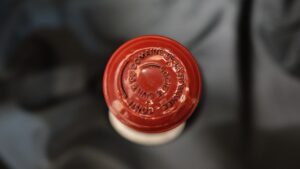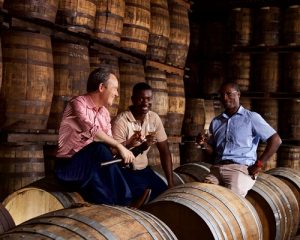
Emerging as a bold new category in the world of Italian fine wines, Super Tuscans quickly gained recognition on the international stage. Names like Sassicaia, Tignanello, Solaia, Masseto, and Ornellaia likely ring a bell. With blends mainly made from Bordeaux grape varieties, releasing them from the constraints of appellations, these wines enjoyed the backing of none other than the legendary Robert Parker back in the day. Let’s take a closer look at the history of Super Tuscan wines and the iconic names that define their reputation today.
A revolution in Tuscany
Tuscany has long been famed for its fine wines. Several prestigious appellations have made their mark here, including Chianti Classico, Brunello di Montalcino, and Vino Nobile di Montepulciano. In this land of winemaking tradition where the geology is exceptionally diverse, Sangiovese, the native grape variety, reigns supreme.
The story of Super Tuscans began in 1944, when Marquis Mario della Rocchetta, a friend of Baron Élie de Rothschild, introduced Cabernet Sauvignon vines from Château Lafite Rothschild to the Tuscan landscape. In awe of the great Bordeaux wines, he decided to plant Cabernet in the Bolgheri region. His first wine, Sassicaia, made from 100% Cabernet Sauvignon, was produced in 1948. This wine was initially appreciated in a small circle, as it was served during private tastings. The marquis marketed his first vintage, a 1968, in 1971.
In the 1970s, a handful of winemakers followed his lead, breaking away from Tuscany’s strict appellation rules. Frustrated by regulations that mandated a majority of Sangiovese in their wines, they sought greater freedom. Confident in the quality of their terroirs and the potential of international grape varieties – such as Cabernet Sauvignon, Merlot, Cabernet Franc, and Syrah – they decided to plant them, even if this choice meant downgrading their wines to vino da tavola (table wine) classification.
A new style of wine was born – a true revolution! In Tuscany, a clear divide emerged. On one side, the staunch defenders of Sangiovese, represented by the prestigious estates of Chianti Classico and Brunello di Montalcino and on the other, the Super Tuscan producers championing the excellence of international grape varieties.
At the time, Super Tuscans struggled to find success in their home market. As a result, producers – such as Florentine winemaker Antinori – turned their focus to international markets where these wines truly found their audience. A key factor in their rise to fame lay in the support of wine critic Robert Parker. Highly impressed by these wines, similar in style to the finest Bordeaux (blend of Cabernet and Merlot, fairly powerful and tannic wines, aged in French oak barrels, with great ageing potential), he was instrumental in cementing their reputation. Beyond their similarities in style, these Italian estates also took inspiration from Bordeaux in their commercial approach. Today, many of the leading names allocate a portion of their production to Bordeaux wine merchants. The great Bordeaux definitely inspires these wines, but there is more to it than that, since the terroir, as you might expect, is clearly different.
Super Tuscan icons
Marchesi Incisa della Rochetta – Tenuta San Guido, Sassicaia
Tenuta San Guido is one of the rare estates where the wine itself is more famous than the winery. Sassicaia, its flagship wine, has played a pivotal role in the history and recognition of the Bolgheri wine region. Today, it stands as one of the most legendary wines in Italy and across the world.
The estate produces three wines:
- Sassicaia: the estate’s great wine made entirely from Cabernet grapes (predominantly Cabernet Sauvignon with a touch of Cabernet Franc).
- Guidalberto: the second wine, designed to be enjoyed in its youth, showcasing the full potential of Merlot.
- Le Difese: a delightful Tuscan wine with generous aromas and a velvety texture, blending 70% Cabernet Sauvignon with 30% of the local Sangiovese.
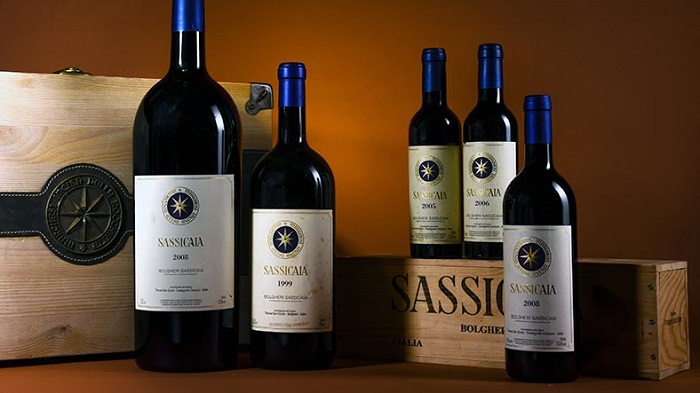
Marchesi Antinori – Tignanello, Solaia, Guado al Tasso
The Antinori family settled in Florence, in the historic Chianti region, at the beginning of the 13th century and traded fabrics and wines, with winemaking gradually becoming the main part of the business. By the 16th century, Antinori wines already had a solid reputation outside Italy. The estate was officially founded in 1898: “Fattoria dei Marchesi Lodovico e Piero Antinori.” And today, the story continues, following in the footsteps of 26 generations. Marquis Piero Antinori is at the helm of the estates, and the Antinori family still lives in Palazzo Antinori, located on the banks of the Arno in Florence. The Antinori are particularly renowned for producing three exceptional Super Tuscan wines:
- Tignanello: 1970 was the first vintage produced. Predominantly made from Sangiovese, Tignanello incorporates a significant proportion of Cabernet in its blend. The wine undergoes approximately 14 months of ageing in small French oak barrels, another major ‘import’ introduced in the 1960s.
- Solaia: produced from a 10-hectare vineyard facing south-west, at an altitude of 350 to 400 metres and located in the province of Tignanello. Unlike Tignanello, Solaia consists of more Cabernet than Sangiovese. This wine is only produced in exceptional years, crafted with the utmost care. In fact, the 1997 vintage was voted Best Wine in the World by Wine Spectator.
- Guado al Tasso: Te name of this wine was inspired by a local curiosity – the sight of badgers (tasso in Italian) crossing a ford (guado). The estate is located about 90 kilometres south-west of Florence, near the medieval town of Bolgheri. The vines are planted at an altitude of 45 to 60 metres on loamy soils. The estate produced its first vintage of Guado al Tasso in 1990.
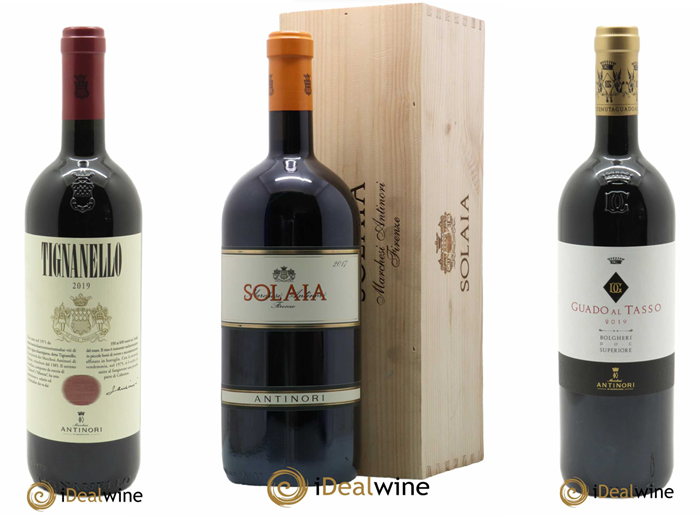
Marchesi de Frescobaldi – Ornellaia & Masseto
The Tenuta dell’ Ornellaia estate spans 91 hectares (76 of which are under vine) and was founded in 1981 by Marchese Lodovico Antinori. The vineyard is planted with classic Bordeaux varieties: Cabernet Sauvignon, Merlot, Cabernet Franc, and Petit Verdot. Since 2005, the estate has been owned by Marchesi de Frescobaldi, another prestigious Tuscan wine family. The extremely qualitative estate has established itself among the world’s finest in a really short period of time. The estate, located along the Tuscan coast, produces several exceptional wines: Masseto, Massetino, Ornellaia, Serre Nuove dell’Ornellaia, and Volte.
Masseto stands out on account of its terroir, located at an altitude of 120 metres, and covering only seven hectares planted entirely with Merlot. The vines enjoy a combination of Mediterranean sunshine in summer and relatively mild temperatures in winter. The cool soil, immune to drought, helps regulate water retention and ensures the grapes ripen gradually – perfect climate and soil conditions for producing a single-variety Merlot. At the top of the hill, known as Masseto Alto, the soil is clayey. The central part of the vineyard, known as Masseto Centrale, forms the backbone of this exceptional wine. Producing Masseto is a long and meticulous process and one that we invite you to explore.
Massetino, a famous ‘second wine’, was produced after the selection was made for its greater peer, Masseto. The first vintage was produced in 2017 in extremely limited quantities.
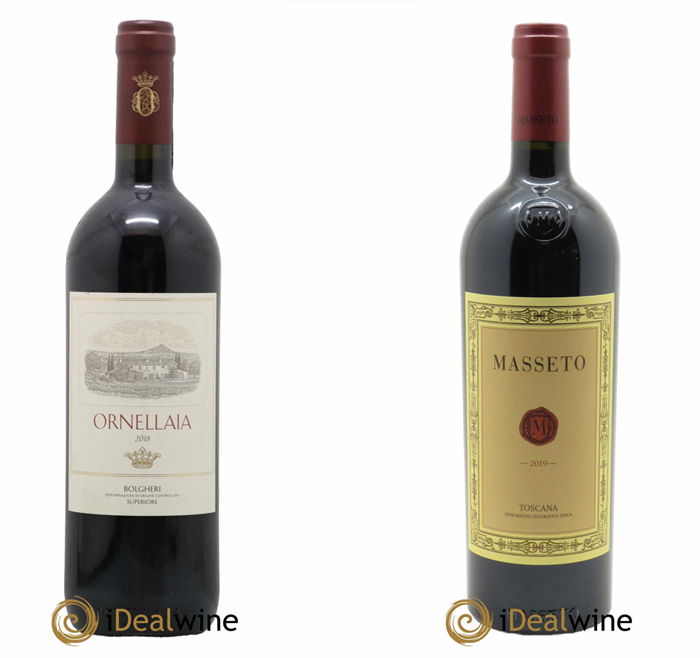
Caiarossa
The Caiarossa estate is one of the Super Tuscan icons. This legendary estate is located near the small medieval village of Riparbella, in the Cecina Valley. The vines, planted on 16 hectares, run down a gentle slope towards the sea. The name Caiarossa reflects the vineyard’s distinctive red gravel soils, composed of limestone, clay, and sandy gravel. The Mediterranean climate combined with the perfect exposure of the vines and the estate’s winemaking expertise all contribute to the unequalled quality of the exceptional wines.
In 2004, Dutch businessman Eric Albada Jelgersma, also owner of Château Giscours, acquired the estate and entrusted the vinification to French winemaker Dominique Génot. Here, Merlot, Cabernet Franc, Cabernet Sauvignon, Petit Verdot and Syrah are blended with Sangiovese to craft wines unlike any others in the world.

